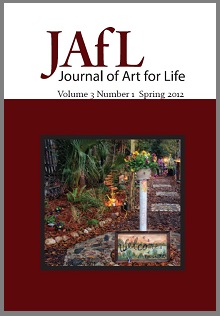Out or in...? Which is it?: The Question of Coming Out in the Heteronormative and Homophobic World of Education
Keywords:
lesbian, gay, bisexual, transgender, LGBT, LGBTQ, queer theory, identity, sexuality, heteronormative, heterosexism, homophobia, LGBT educators, art educationAbstract
Lesbian, gay, bisexual, transgender (LGBT) educators and students face a frightening world inside our school buildings. LGBT educators constantly face the potential for the life-threatening consequences of coming out in the classroom or the negative emotional and physical effects of remaining closeted. LGBT students and teachers report regular assaults and abuses due to their marginalized status in school. This paper examines the tensions which circulate around the issue of coming out for the LGBT school community. Furthermore, the topic of queer theory is explored along with the opportunities provided by such theory for the deconstruction of the existing heterosexist framework in our schools. The question of how this relates to the art educator is considered in the context of the unique opportunities afforded in the art room for today’s youth to consider issues of identity, differences, and community.Downloads
Published
2012-03-15
Issue
Section
Articles
License
Authors who publish with this journal agree to the following terms:- Authors retain copyright and grant the journal right of first publication with the work simultaneously licensed under a Creative Commons Attribution License that allows others to share the work with an acknowledgement of the work's authorship and initial publication in this journal.
- Authors are able to enter into separate, additional contractual arrangements for the non-exclusive distribution of the journal's published version of the work (e.g., post it to an institutional repository or publish it in a book), with an acknowledgement of its initial publication in this journal.
- Authors are permitted and encouraged to post their work online (e.g., in institutional repositories or on their website) prior to and during the submission process, as it can lead to productive exchanges, as well as earlier and greater citation of published work (See The Effect of Open Access).


